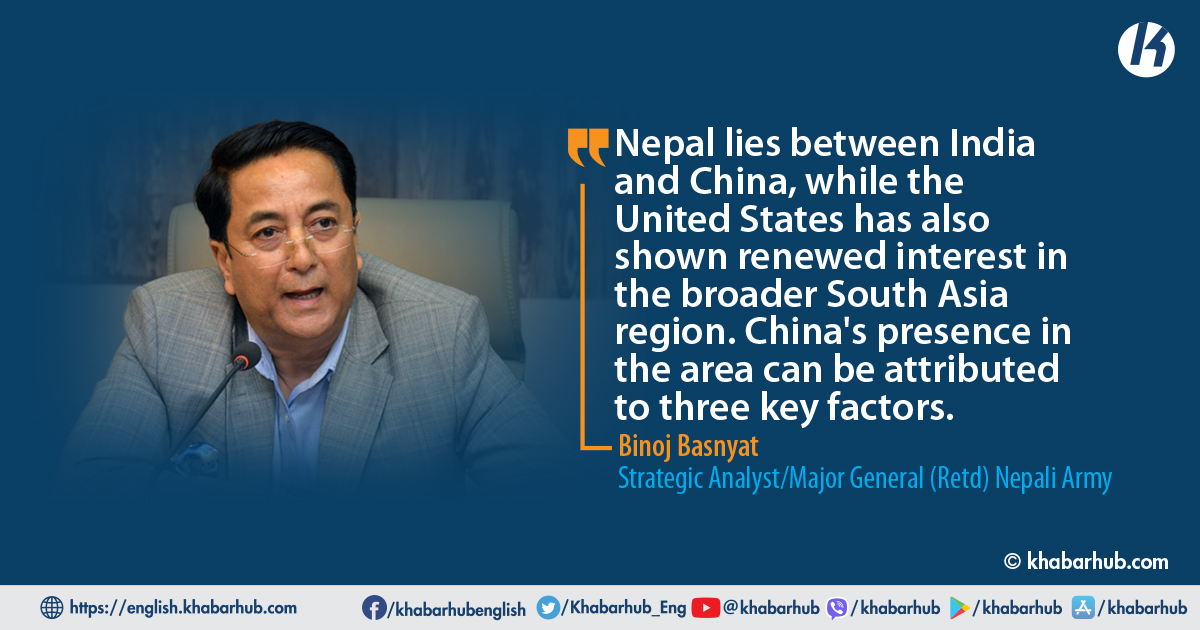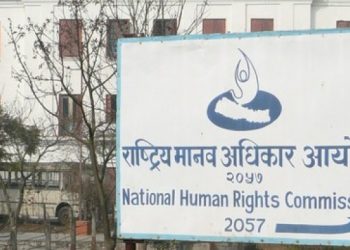Prime Minister Pushpa Kamal Dahal Prachanda’s diplomacy echoes that of the key players in global affairs, namely China, India, and the US.
Prachanda stated, “I have found all three powers to be positive towards Nepal,” indicating that their engagement with Nepal is due to his capable leadership.
His diplomatic efforts manifest in three strategic responses. His visit to India aimed to reaffirm his position as Prime Minister, with limited strategic gains.
The United Nations General Assembly (UNGA) provided an opportunity for him to highlight the challenges faced by Least Developed Countries (LDCs) as their Chair and to advocate for amnesty regarding human rights abuses during the conflict.
The 78th UNGA occurred amidst debates about its effectiveness and the absence of the four permanent members (China, France, Russia, UK) and India’s head of state or government.
There was a need for equitable and inclusive economic growth, access to quality education and healthcare, job creation, and social protection measures to address inequality and poverty. International organizations reiterated their commitments to achieving these common goals through SDGs and leaving no one behind.
President Biden hosted a reception attended by all heads of delegates but lacked significant strategic engagements in the Nepal-US partnership.
His visit to China reflects the implementation of soft power diplomacy and the reaffirmation of political trust while endorsing the “One China” principles, in contrast to previous policies.
Following Prachanda’s visits to the UNGA and China, it can be inferred that they will have significant implications for Nepal’s foreign relations in the future.
The diplomatic efforts have, to a large extent, focused on personal and domestic consumption rather than yielding national strategic benefits.
78th UNGA: Supplementing Party’s Pledges Versus National Strategic Gains
In addition to Prachanda’s address to the UNGA, as Chair, he initiated consultations with the 46 nations in the LDC group.
His visit to New York was more focused on the UNGA than on bilateral arrangements with President Biden, even though he hosted a reception.
The UNGA convened at a pivotal time when the world grapples with numerous pressing strategic issues that demand urgent attention for the sake of global stability.
These concerns require global attention and concerted efforts.
Given the UN’s ineptness and ineffectiveness in discussions, Prachanda advocated for the reform of the United Nations Security Council, emphasizing the need for representation, transparency, and accountability, along with the renewal of the UNGA and the Economic and Social Council, granting them added responsibility and prominence to address India’s concerns and interests in global affairs.
Undoubtedly, the most immediate and all-encompassing issue was the world’s increasing reliance on digital technologies and digital transformation.
The focus was on bridging the digital divide, promoting digital inclusivity, protecting digital rights, and addressing cybersecurity challenges.
The assembly recognized the transformative potential of digital technologies in achieving Sustainable Development Goals (SDGs) and emphasized the need for a people-focused digital future.
The UNGA also provided a platform for addressing geopolitical tensions and conflicts, supporting Nepal’s transitional justice efforts, which involve making “serious efforts” to build consensus and conclude the home-grown peace process without granting blanket amnesty for serious violations of human rights, aiming for enduring peace and harmony through justice and reconciliation.
Protection and promotion of human rights, democratic values, and the rule of law were important themes throughout the discussions, covering a range of issues, including gender equality, racial justice, freedom of speech, LGBTQ+ rights, and ending violence and discrimination in all forms.
It is important to note that the UNGA brings together diverse perspectives, and additional pressing issues may have received attention based on regional or national priorities.
Nonetheless, the focus remained on the implementation of the ‘Paris Agreement,’ accelerating climate action, and mobilizing financial resources to support developing countries in their efforts to mitigate and adapt to the climate crisis.
The close proximity to Tibet and its geographical location can impact China’s control and management of its Tibetan Autonomous Region.
This highlighted the significance of the UN Climate Change Conference of the Parties (COP26).
Prachanda stated, “On our part, Nepal remains fully committed to the Paris Agreement and achieving its goals, having set an ambitious target of reaching a net-zero scenario by 2045.”
There was a need for equitable and inclusive economic growth, access to quality education and healthcare, job creation, and social protection measures to address inequality and poverty. International organizations reiterated their commitments to achieving these common goals through SDGs and leaving no one behind.
“It is time to build trust, promote partnership and collaboration, and work in solidarity when the world is facing challenges of unprecedented scale and nature,” he said.
In the LDC meeting, Prachanda credited the reshaping of global governance and the reform of multilateral institutions for sustaining socio-economic growth and development. Additionally, he discussed Nepal’s strategy for smoothly graduating from the status of an LDC by 2026.
Balancing Role of Regional Powers
The visit to China is happening following the voyage to India three and a half months ago, Beijing’s competitor for influence.
A 13-point joint statement with political support for the ‘principles’ of “One China,” road infrastructure, cooperation in energy, agriculture, and information technology, as well as a review of the existing trade agreement, was signed.
Chinese tourists exploring Nepal’s rich cultural heritage and breathtaking landscapes can contribute to its economy, especially in the hospitality and service sectors.
Nepal is an indispensable geostrategic consideration for Beijing with two primary objectives – strategic and economic.
Strategically, its geographic positioning makes it an important neighbor for connectivity and trade.
The close proximity to Tibet and its geographical location can impact China’s control and management of its Tibetan Autonomous Region.
Additionally, countering India’s influence, which has long dominated Nepal’s foreign relations due to historical, cultural, and religious ties, is crucial. However, China has been steadily deepening its engagement to counterbalance India’s influence.
With close strategic ties, China can exert influence in a region traditionally considered India’s sphere of influence.
Maintaining stability in the vicinity of the border region is crucial as a critical geostrategic consideration.
The border region serves as a gateway for preventing any cross-border security threats, such as separatist or insurgent activities, while China’s ‘Land Border Law’ has already been initiated.
In the 1970s, Khampa rebels benefited from instability as an escape route and strategic base for fighting the Chinese People’s Liberation Army.
Involvement in the Belt and Road Initiative (BRI) provides mutual benefits.
China’s infrastructure projects, including roadways, railways, and hydropower plants, enhance connectivity and open up trade routes.
The BRI facilitates China’s broader strategic objectives and expands its influence through economic integration, but its execution is still pending, as China’s “wait and see” policy prevails.
Economically, there are several opportunities. South Asia represents about one-fourth of the world’s population, totaling 1.9 billion, making it the most populous and densely populated geographical region in the world.
The region possesses abundant natural resources, including minerals, hydropower potential, and agricultural products.
Four strategic national concerns can be observed in the diplomatic efforts, despite a wide range of topics covered in both the UN and the ten Agreements and three Memorandums of Understanding with China.
China’s growing economy requires access to resources, and Nepal can provide opportunities for Chinese companies to exploit and extract these resources. Additionally, Nepal’s potential for hydroelectric power generation aligns with China’s energy demands.
As part of its BRI, China has shown interest in developing infrastructure, which can enhance connectivity within the country and the wider region.
The potential of underdeveloped infrastructure presents investment opportunities.
China can also benefit from the growth in tourism by promoting travel and cultural exchange between the two countries.
Chinese tourists exploring Nepal’s rich cultural heritage and breathtaking landscapes can contribute to its economy, especially in the hospitality and service sectors.
Overall, Nepal’s economic viability for China lies in its potential as a trade partner, access to natural resources, infrastructure development opportunities, and the growth of tourism.
However, it is essential to note that Nepal’s economic prospects are intertwined with its own development plans and strategic interests, ensuring a balanced approach that benefits both countries.
This sequentially attempts to address the diplomacy of the red line of China, which is to limit traditional linkages with India and the US and the West mainly on the Tibetan refugee’s status as well as unwavering support of the “One China” principles. In addition, develop strong linkages between the Chinese Communist Party and the Nepal Communist Party Maoists and other Communist-orientated parties.
It is worth noting that while China has strategic interests in Nepal, the relationship between the two countries is complex and has both positive and negative aspects.
Nepal also balances its relations with China and India to safeguard its own national interests and benefit economically from both countries’ investments.
This follows various events that have significant consequences. One is the foot-dragging of the endorsement of the US-granted Millennium Challenge Corporation Nepal Compact, even after formal implementation.
The second issue is the unwillingness to further Gurkha recruitment, breaking the long-standing tradition affecting the security bond, as well as the visit to Mansarovar, which carries social, cultural, and religious significance for Nepal and India.
Thirdly, there is no mention of the 2023 edition of China’s standard map that includes the ‘Kalapani Area’ inside Indian territory, despite protests and assurances made.
Conclusion
Nepal finds itself navigating between India and China, with the US also rekindling and reaffirming its interest in the broader South Asia region. China’s presence in the region is underscored by three factors.
First, the stressed geostrategic and security situation in the Himalayas and the increasing obligation of the US as a development partner for Nepal.
Lastly, the extension of bilateral, trilateral, quadrilateral, and multilateral collaborations between India and the US, driven by common Indo-Pacific interests and efforts to uplift Nepal’s energy sector.
However, this also raises Chinese sensitivities about external support for the “free Tibet” movement or Tibetan separatism, as well as activism spilling over to Tibet via Nepal. India’s hosting of the Tibetan Government in Exile and its support for the Dalai Lama also concerns China.
These interactions add complexities to Nepal’s geopolitical landscape.
The UN acknowledges Nepal’s commitment to global peace through its contributions of peacekeeping forces in various parts of the world, enhancing its image through defense diplomacy.
Four strategic national concerns can be observed in the diplomatic efforts, despite a wide range of topics covered in both the UN and the ten Agreements and three Memorandums of Understanding with China.
First, in the realm of geostrategic endeavors, the issue of the ‘climate crisis’ takes precedence.
Nepal has pledged to the Paris Agreement and set an ambitious target of reaching a net-zero scenario by 2045.
Prachanda highlighted the need for mechanisms to compensate countries like Nepal due to its geographic position in relation to climate change, emphasizing that, despite low emissions, vast forested areas help preserve biodiversity, but Nepal “suffers unfairly from the climate crisis.”
Secondly, Human Rights and their abuses are a matter of concern for member states of the global body. Prachanda emphasized his government’s unwavering efforts to successfully conclude the Transitional Justice process with support and assistance from the international community and China.
In an interview with Global Times, he stated, “The current government has been focused on accelerating the truth and reconciliation process.”
Thirdly, in the diplomacy of non-alignment and strengthening ties with China, Nepal has provided steadfast political support for the “One-China” principle, committing to not allow any anti-China activities on its soil in exchange for economic benefits and infrastructural development.
Nepal’s engagement with China can yield economic benefits, including investment, trade, and infrastructure development projects.
The Belt and Road Initiative (BRI), with its focus on connectivity and economic development, offers opportunities to enhance transport links, develop energy and trade corridors, and reduce reliance on India.
By strengthening ties with China, Nepal aims to leverage economic benefits and infrastructural development while maintaining a balanced relationship with India.
However, this also raises Chinese sensitivities about external support for the “free Tibet” movement or Tibetan separatism, as well as activism spilling over to Tibet via Nepal. India’s hosting of the Tibetan Government in Exile and its support for the Dalai Lama also concerns China.
Similarly, there are concerns that US political-diplomatic promotion of democratic values, human rights, and religious freedom for Tibetans could inspire movements and organizations challenging China’s political and security structure.
Lastly, it’s worth noting that among the 46 Least Developed Countries (LDCs), 44 are landlocked countries, with 11 of them not being UN members.
The 11 landlocked yet developed countries provide ample evidence that Nepal could join their ranks with precise policies and honest diplomatic engagements.
The need for additional international support through development, technical assistance, and Foreign Direct Investment was duly discussed.
Overall, Prachanda’s visits to the UNGA and China signify Nepal’s intent to diversify its foreign relations, traditionally dominated by its two giant neighbors, and reduce overdependence on any single country, particularly India.
By strengthening ties with China, Nepal aims to leverage economic benefits and infrastructural development while maintaining a balanced relationship with India.
These moves could shape Nepal’s foreign policy, convey sentiments of nationalism, and influence its regional dynamics in the foreseeable future.
(Views expressed in this opinion are the writer’s and do not necessarily reflect the editorial stance of Khabarhub)









Comment